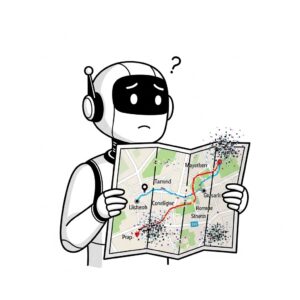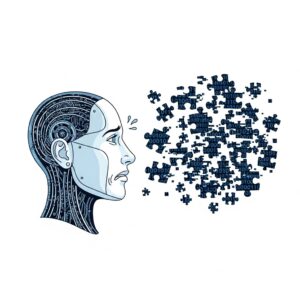Apply For Scholarship
Apply For Scholarship
Artificial Intelligence (AI) is often seen as the smartest brain of the digital age.It helps in medical diagnoses, financial forecasts, and academic research by analyzing huge amounts of data and finding patterns that humans might miss. However, there’s a key truth to remember: garbage in, garbage out.
AI is only as good as the information it receives. If the data is wrong, biased, incomplete, or outdated, the results can be extremely harmful. This isn’t just a theory — poor data has already caused problems in fields like healthcare, finance, and education, even affecting places like the top academic project institute in Kochi or an online finance course.
Let’s examine what happens when AI is fed bad data and why this issue must be addressed right away.

AI is like a high-performance car — it needs the right fuel to work. That fuel is data. Every prediction, suggestion, or decision AI makes depends entirely on the data it has been given.
If the dataset is flawed, AI just runs with those errors. Imagine a financial model built on false information about market history — not only would investors lose money, but students in an online finance class might also learn incorrect techniques. The same problem could lead to the collapse of projects at an academic institute in Trivandrum if the data is wrong.
One wrong dataset can cause a series of problems:
Even a single faulty dataset at the best academic project institute in Kochi could ruin months of hard work.

AI failures are not rare — they have already happened:
These incidents show that bad data can hurt more than just models — it can damage trust and even endanger lives.
Unlike humans, AI doesn’t have a natural sense of doubt. It doesn’t question something if it seems off. Without tools to detect bias or anomalies, AI takes everything at face value.
This is a serious risk in education. Students at an academic center in Trivandrum might unknowingly base their projects on incorrect insights from AI. Once those errors become known, they can cause major problems

Putting flawed data into AI changes entire systems.
The main risks are:
Surprisingly, humans tend to trust AI too much.
For example, a student in an online finance course might take AI predictions as truth without investigating the source. Or students in an academic project institute in Kochi might use AI conclusions without questioning them, unintentionally accepting incorrect ideas. It’s similar to blindly following a GPS into a dead-end just because “the system said so.”
Bad data comes in various harmful forms:
Incomplete Data → Leads to incomplete predictions.
Incorrect Data → From human error or flawed measurements.
Outdated Data → Based on old information.
Redundant/Irrelevant Data → Adds noise, reducing accuracy.
Poorly Labeled Data → Leads to incorrect training for AI models.
Biased Data → Automates social bias.
Each type of bad data affects AI in a different way, but the consequences always show up eventually.
History shows clearly:
Microsoft’s Tay chatbot became offensive within 24 hours.
Amazon’s hiring tool continued to favor men until it was shut down.
These breakdowns weren’t just technical issues — they damaged reputations, cost resources, and reduced confidence in AI.
The solution lies in proactive data management.
Best practices include:
Strict Cleaning: Remove errors, duplicates, and skewed data.
Bias Detection: Use third-party audits to find hidden bias.
Transparency: Disclose data sources in educational and financial platforms.
Automated Tools: Tools like TimeXtender ensure accuracy, consistency, and standardization.
Although painful, these failures can become valuable lessons. At an academic project institute in Trivandrum, flawed outcomes teach students about the dangers of unchecked data. In finance, outdated models help emphasize the importance of constant updates. When handled responsibly, errors can become the foundation for better systems.
Feeding AI bad data is like teaching history from a faulty textbook.
The student will answer confidently — but all the answers will be wrong.
The truth behind what happened in AI under false data is a wake-up call: AI is not really intelligent.
It’s just a reflection of the accuracy of the data we put into it.
When AI is trained on poor-quality data (incomplete, biased, outdated, or mislabeled), it produces flawed results. This leads to wrong medical diagnoses, misleading financial forecasts, and biased hiring decisions. Since AI cannot question data like humans, it simply amplifies whatever errors it receives, making bad outcomes inevitable.
Yes, absolutely. Imagine students at an academic institute relying on AI-driven tools that are trained on outdated or incorrect data. They may end up learning wrong methods, making mistakes in research projects, or even adopting flawed financial models. This is why academic institutions must train students to validate AI insights instead of blindly trusting them.
The best way to safeguard is by learning how to analyze, clean, and validate data before using it in AI. Students should build skills in data handling, machine learning fundamentals, and AI ethics. At NDMIT (National Digital Marketing Institute & Training), learners not only gain hands-on experience with real-world projects but also develop the critical ability to question data quality — ensuring they don’t fall into the trap of “garbage in, garbage out.”
NDMIT is among the top digital marketing and data science institutes in India. It offers practical courses covering AI, Data Analytics, Machine Learning, SEO, and Digital Marketing. Unlike purely theoretical programs, NDMIT focuses on live projects, industry-relevant case studies, and professional mentorship. This ensures students not only understand AI concepts but also learn how to avoid mistakes caused by poor or biased data — a must-have skill in today’s data-driven industries.
The key lesson is that AI is not magic — it’s a mirror of the data fed into it. Businesses should adopt strong data governance policies, and students should focus on learning how to clean and validate data. From Amazon’s biased hiring tool to Microsoft’s chatbot failure, the message is clear: responsible data practices are essential to trust AI systems.
Asia’s Leading Digital Marketing & Data Science Institute
A comprehensive methodology with the best curriculum, designed according to current corporate demands and needs. [Privacy-Policy]
Copyright © NDMIT Edusoft Private Limited